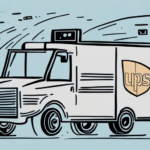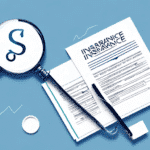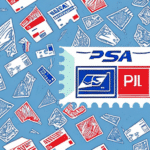Are you a frequent package sender or receiver? If so, it's likely that you've heard of insured parcel post. This article provides an in-depth analysis of insured parcel post, covering its definition, benefits, types, and common misconceptions to help you make informed decisions when shipping valuable or fragile items.
Understanding Insured Parcel Post
Insured parcel post is a mailing option that allows you to protect your package's value against loss or damage during transit. This service is crucial for individuals and businesses that frequently send valuable, fragile, or time-sensitive items, providing peace of mind and financial protection.
What is Insured Parcel Post?
Insured parcel post involves declaring the value of your package and paying an additional fee to insure it. In the event of loss, theft, or damage during shipping, the postal service reimburses the declared value, mitigating potential financial losses.
Why is Insured Parcel Post Important?
Sending items without insurance can be risky, especially when dealing with high-value or irreplaceable goods. Insured parcel post ensures that you are financially protected against unforeseen circumstances, reducing stress and ensuring that your valuable items reach their destination securely.
Benefits and Features of Insured Parcel Post
Opting for insured parcel post offers several advantages that enhance the shipping experience:
Protection Against Loss and Damage
The primary benefit is the financial protection against loss or damage. According to the United States Postal Service, millions of parcels are shipped annually, and insurance helps safeguard the sender's investment.
Enhanced Tracking Capabilities
Insured parcels come with tracking numbers, allowing you to monitor the package's journey in real-time. This feature is particularly beneficial for time-sensitive deliveries or high-value items, providing transparency and reducing anxiety about the shipment's status.
Faster Delivery Options
Many insured shipping services offer expedited delivery options. For instance, USPS Priority Mail Express guarantees overnight delivery to most locations, ensuring that your package arrives promptly.
How to Utilize Insured Parcel Post
Understanding the operational aspects of insured parcel post can help you maximize its benefits:
Purchasing and Printing Labels
You can purchase and print shipping labels online via the USPS website or at your local post office. Online purchases often provide discounts and allow you to manage shipments more efficiently. Ensure you declare the accurate value of your package to determine the appropriate insurance fee.
Tracking Your Shipment
Once your parcel is shipped, use the provided tracking number on the USPS tracking page to monitor its progress. Setting up email or text alerts can keep you informed about any status changes or delivery updates.
Filing Claims for Loss or Damage
If your package is lost or arrives damaged, you can file a claim with the postal service. Ensure you have all necessary documentation, such as receipts or appraisals, to support your claim and facilitate a smoother reimbursement process.
Types of Insured Parcel Post
Various shipping options offer insured parcel post, each catering to different needs:
- Priority Mail Express: Guarantees overnight delivery with tracking and insurance coverage up to $100.
- Priority Mail: Provides fast delivery within 1-3 business days with tracking and insurance coverage up to $50.
- First-Class Mail: Suitable for lightweight and small parcels with insurance coverage up to $500.
- Package Services: Ideal for larger and heavier parcels, offering insurance coverage up to $5,000.
Insurance coverage may vary based on the destination and the item's value. Additionally, services like signature confirmation or restricted delivery can be added for enhanced security.
Best Practices for Packaging Insured Parcels
Proper packaging is essential to ensure that your insured parcel arrives safely and intact. Follow these guidelines to enhance the protection of your shipment:
- Use Sturdy Packaging: Select a durable box or envelope that's appropriate for the size and weight of your item.
- Securely Wrap Items: Utilize cushioning materials such as bubble wrap, packing peanuts, or foam to protect the contents.
- Seal with Quality Tape: Use strong packing tape to seal all openings and reinforce seams, preventing accidental openings during transit.
- Clearly Label the Package: Ensure that the recipient's name, address, and tracking number are legibly printed on the package.
For fragile items, consider double-boxing or using specialized packaging materials. If shipping items sensitive to temperature or humidity, insulated packaging or desiccant packets can prevent damage.
Handling Claims for Lost or Damaged Parcels
If your insured parcel is lost or arrives damaged, timely action is crucial for a successful claim:
Filing a Claim
Contact the postal service as soon as you notice an issue. Provide necessary documentation, including proof of the item's value and evidence of damage or loss.
Understanding Limitations
Be aware of restrictions, such as prohibited items or maximum coverage limits. For example, items like hazardous materials or live animals may not be insurable. Additionally, claims must typically be filed within a specific timeframe after the incident.
Preventive Measures
To minimize the risk of loss or damage, consider using additional security measures like registered mail or third-party insurance services, especially for high-value items.
Common Misconceptions About Insured Parcel Post
Several myths surround insured parcel post, potentially deterring individuals from utilizing this service:
- It's Too Expensive: While insurance fees vary based on the package's value, insured parcel post is generally affordable and offers significant protection.
- All Items Can Be Insured: Certain items, such as hazardous materials, are excluded from insurance coverage.
- Insurance Guarantees On-Time Delivery: Insurance covers loss or damage but does not ensure that the parcel will arrive by a specific date.
Understanding the actual benefits and limitations of insured parcel post can help you make informed shipping decisions.
Conclusion
Insured parcel post is a valuable service that offers protection and peace of mind when shipping important or valuable items. By understanding its benefits, types, and best practices, you can ensure that your packages are safeguarded against unforeseen events during transit. Whether you're an individual sending personal items or a business managing shipments, utilizing insured parcel post can enhance your shipping strategy and provide assurance that your parcels arrive safely and securely.






















